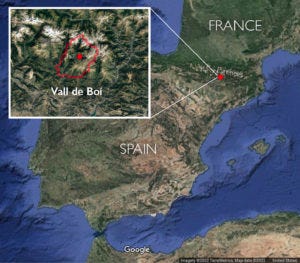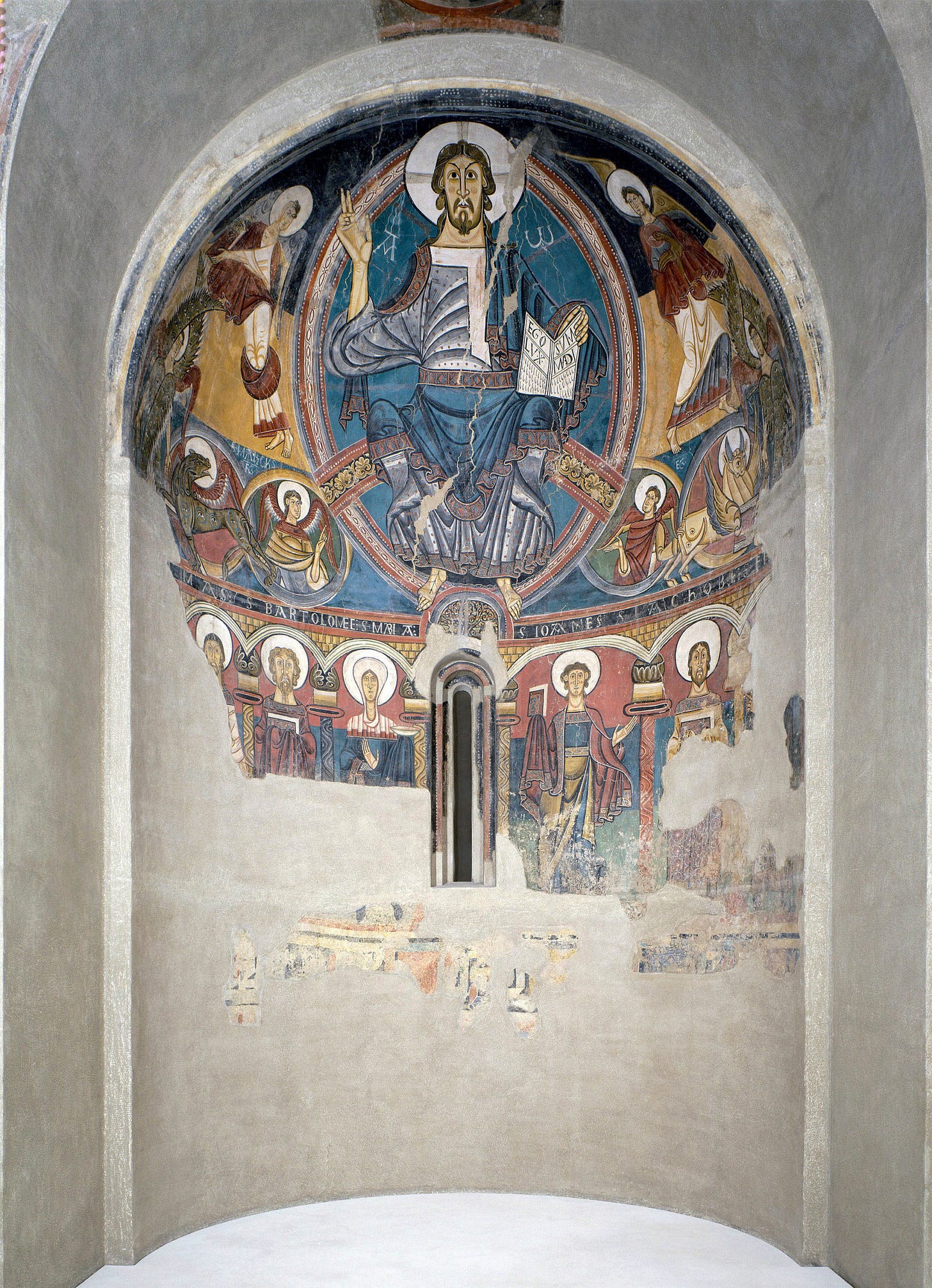Writing about Fromista recently got me thinking about another remarkable Spanish Romanesque church.
I had heard whispers of marvelous ancient churches in the Vall de Boi, in the Catalan Pyrenees, near the French border. It was said that they had to be seen.
I asked my Spanish friends about the area and its renown Romanesque churches, but none of them had heard of it. That served to further pique my interest.
So, several years ago, on my way back to Madrid from Lourdes, I imagined the valley was roughly on the route. Off I set, and after about three hours of driving to and over the Pyrenees, I came to the tiny mountain village of Taüll, Spain. It was a quaint and quiet place. I followed the signs, and in a few of minutes I came to the Church of Sant Clement.
Sitting against the backdrop of rugged mountains, was a typical low and simple Romanesque structure, with a touch of influence from the Italians in its bell tower. But I had not come for the architecture. It was its ancient murals that I was chasing.
The little church, consecrated in the year 1123, was said to have a remarkable set of frescoes… but when I went inside, I found the walls were bare. They had been stripped of their art.
It was a mystery. The remnants of the frescoes remained, fading into the walls behind the altar like phantoms.
I was confused and disappointed. I consulted my guide pamphlet to learn that the art, which had been protected for hundreds of years by the isolation of the church in this remote valley, had become the target of American Collectors in the early 20th century.
To protect them, these stunning murals were moved from the church and are now stored in the National Museum of Art of Catalonia, in Barcelona, where, to display them, the main sections of the church’s interior structure have been recreated.
I could see from the photos that the artists had cleverly used the nooks and curves of the little church to display their genius.
The main scenes showed Jesus with the four Evangelists. Jesus displays a text, “EGO SUM LUX MUNDI” (“I am the light of the world”) from the Gospel of John. The Greek letters “Alpha” and “Omega” are painted in white on each side of Christ’s shoulders, referring to the Book of Revelation where Christ describes his all-encompassing nature as “the Alpha and the Omega, the first and the last, the beginning and the end”.
And just below them, are Mary and the Apostles.
The images were striking. Yet, I was not at all prepared for what came next. The church went completely dark. Then, a combination of sound and light enveloped the inside of the church. Please click the link below to watch what I experienced. It is nine minutes well spent.
When the show concluded, I remained in silence. I was stunned by the genius of the recreation, and even more by the original, unknown artists who created these remarkable murals… their images stuck with as I drove down the mountain and on to Madrid.











It’s hard to believe but Kelly Conway has finally outdone himself. I’ve praised his substack columns over and over but this tops them all in its artistic and spiritual endeavors ! Yes, and the air of deep mystery that this ancient Romanesque church gives off is an amazing component for all adventurers to experience. I feel very blessed to have encountered this illustrated essay.
His endless curiosity with Spain and its spirituality is inspiring. Oh, to have such a passion in my life. Herb Fitz Gibbon